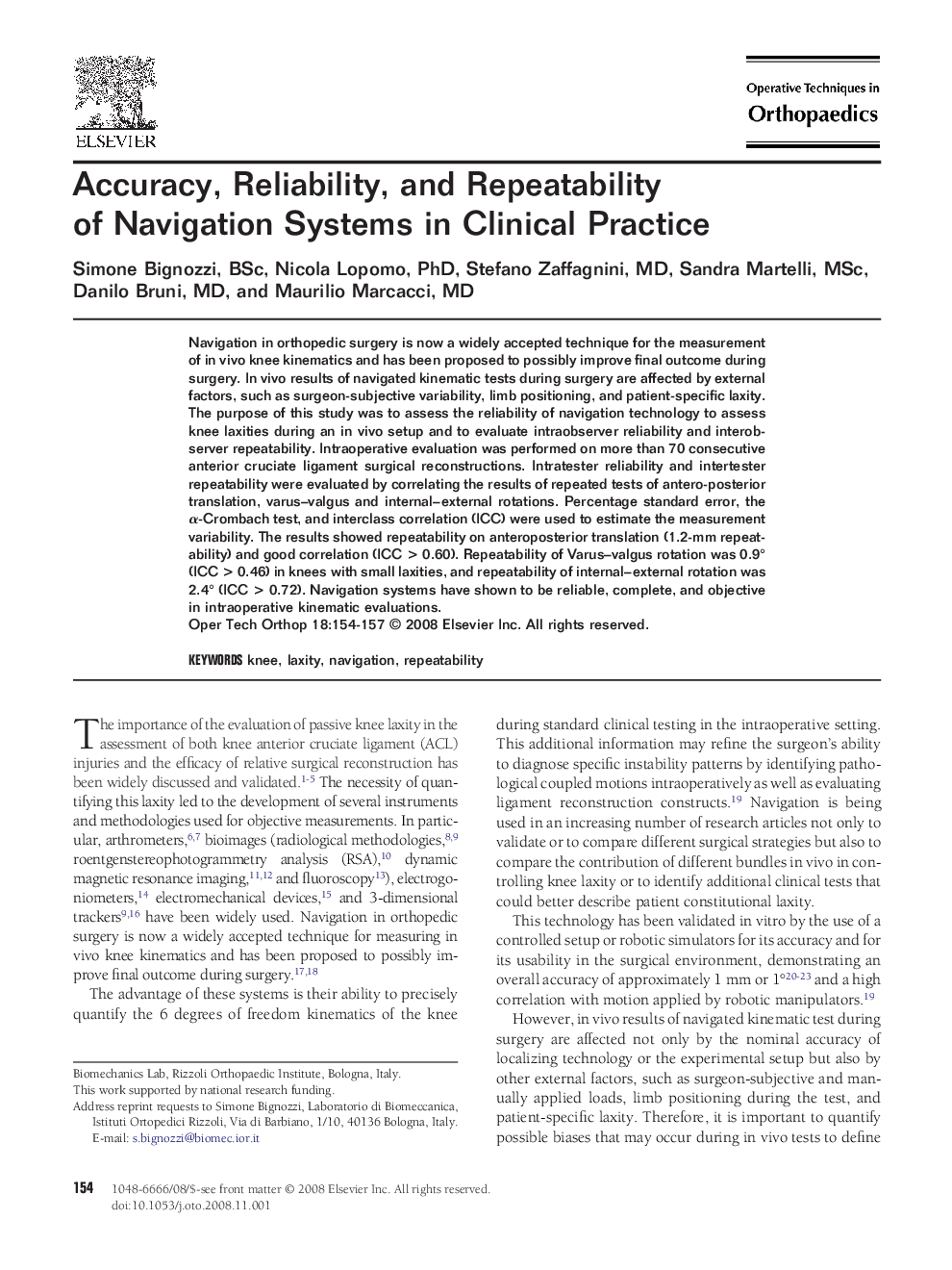| Article ID | Journal | Published Year | Pages | File Type |
|---|---|---|---|---|
| 4079156 | Operative Techniques in Orthopaedics | 2008 | 4 Pages |
Navigation in orthopedic surgery is now a widely accepted technique for the measurement of in vivo knee kinematics and has been proposed to possibly improve final outcome during surgery. In vivo results of navigated kinematic tests during surgery are affected by external factors, such as surgeon-subjective variability, limb positioning, and patient-specific laxity. The purpose of this study was to assess the reliability of navigation technology to assess knee laxities during an in vivo setup and to evaluate intraobserver reliability and interobserver repeatability. Intraoperative evaluation was performed on more than 70 consecutive anterior cruciate ligament surgical reconstructions. Intratester reliability and intertester repeatability were evaluated by correlating the results of repeated tests of antero-posterior translation, varus–valgus and internal–external rotations. Percentage standard error, the α-Crombach test, and interclass correlation (ICC) were used to estimate the measurement variability. The results showed repeatability on anteroposterior translation (1.2-mm repeatability) and good correlation (ICC > 0.60). Repeatability of Varus–valgus rotation was 0.9° (ICC > 0.46) in knees with small laxities, and repeatability of internal–external rotation was 2.4° (ICC > 0.72). Navigation systems have shown to be reliable, complete, and objective in intraoperative kinematic evaluations.
